Even if average genetics will decline in USA that scenario will not happen because all the technological innovations happen from a small pool of talented people. There will still always be enough white high IQ scientists and engineers and programmers in USA to keep inventing things needed to keep the military advanced provided the budget is there.105 IQ v. 90 IQ + 50 years of technology advancement will be just like the European settlers in the west v. the Natives.
You are using an out of date browser. It may not display this or other websites correctly.
You should upgrade or use an alternative browser.
You should upgrade or use an alternative browser.
The China Thread
- Thread starter God's lonely asperger
- Start date
In 50 years? Maybe, maybe not, but 150 IQ people don't grow on trees, and it takes more than just a few to advance technology, much less finding these rare gems with DEI making sure to keep them out of any opportunity. The trajectory is already there, and unless something major alters the trajectory, the Chinese will just become the superior nation and only superpower, with no one to stop them.Even if average genetics will decline in USA that scenario will not happen because all the technological innovations happen from a small pool of talented people. There will still always be enough white high IQ scientists and engineers and programmers in USA to keep inventing things needed to keep the military advanced provided the budget is there.
Not disputing any of this.
Modern Taiwan is going in the wrong direction for sure with the faggot nonsense..
However, I visited both mainland China AND Taiwan quite a few times.....and they really are 2 different types of people.
Taiwanese are a lot more quiet, reserved and educated....streets are cleaner, and everything is a lot less chaotic.
People don't spit on the street, parents don't let toddlers pee outdoors, and almost no one has arguments out in public.
Taiwan still uses the much more complicated traditional Hanzu Chinese writing, rather than the simplified one used on the mainland.
Also, a sizeable part of people in Taiwan have at least some Japanese ancestry as well as it was under Japanese control for 50 years from 1895 until 1945.
You can simply tell modern Taiwanese are mostly descended from the richer, educated, property owning, upper classes which used to live in mainland China, while those who stayed under the communists, were all the poorer lower class factory workers and farmers most of which could not read or write until after 1949.
It was almost a naturally occurring 100% class division which occurred from 1945 to 1949....and you can see the stark difference when travelling from Taiwan to the mainland or vice versa.
However, I will admit Taiwan needs to get rid of the globohomo faggot nonsense, or it will be their doom.
Also not talked about was the Taiwanese general revulsion to the KMT when they first came across the straight. At that time, the Taiwanese had essentially been Japanese for half a century. They had all the modern infrastructure that could be found in Tokyo. So when the Chinese started flooding across fleeing the communists, the Taiwanese weren't at all thrilled. But of course the KMT was more than thilled; They got to inherit things like sanitation, electricity and transport.
I have a lot of family in Taiwan through my wife's father. They all wish the Japs had never left. But they have been busy rewriting history to the point that young people are more likely to believe a school textbook than their own 100 year old grandpa yelling in Japanese about killing commies.
Weren't the Taiwanese looked down upon by the Japanese though?
The new textbooks under the DPP already preach an independent perspective, separating Taiwanese history from the mainland, even though there isn't much history to write about in Taiwan, while the older KMT textbooks emphasized Chinese history.
The new textbooks under the DPP already preach an independent perspective, separating Taiwanese history from the mainland, even though there isn't much history to write about in Taiwan, while the older KMT textbooks emphasized Chinese history.
The KMT line is that they are the preserver and true continuation of the 5000 years of Chinese civilization while the CCP are the ones that tried to destroy all of that in order to start with a clean slate from year zero. There's a big amount of resistance in Taiwan to that especially from the younger generations. It's why you see there's an attempt to create a new Taiwanese identity that is separate from Chinese identity and to even make it seem like Taiwanese and Chinese are two different ethnicities. If you want to think about how silly this is, it would be as if people started saying North Korean and South Korean were separate ethnic identities
As for Japan/Taiwan, Taiwanese are some of the biggest weeaboos that you'll see in the world. English and Japanese are the two most common second languages to learn in Taiwan. I think there was an incident a few years ago at some sort of sports tournament where after the Taiwanese team was eliminated and it came down to Japan vs China in the finals the Taiwanese actually cheered for the Japanese team over the Chinese team. I wouldn't be surprised if the Taiwanese population had to pick between been reunified with China or going back to being a Japanese colony that the majority of the population would pick the latter.
As for Japan/Taiwan, Taiwanese are some of the biggest weeaboos that you'll see in the world. English and Japanese are the two most common second languages to learn in Taiwan. I think there was an incident a few years ago at some sort of sports tournament where after the Taiwanese team was eliminated and it came down to Japan vs China in the finals the Taiwanese actually cheered for the Japanese team over the Chinese team. I wouldn't be surprised if the Taiwanese population had to pick between been reunified with China or going back to being a Japanese colony that the majority of the population would pick the latter.
Last edited:
The KMT line is that they are the preserver and true continuation of the 5000 years of Chinese civilization while the CCP are the ones that tried to destroy all of that in order to start with a clean slate from year zero. There's a big amount of resistance in Taiwan to that especially from the younger generations. It's why you see there's an attempt to create a new Taiwanese identity that is separate from Chinese identity and to even make it seem like Taiwanese and Chinese are two different ethnicities. If you want to think about how silly this is, it would be as if people started saying North Korean and South Korean were separate ethnic identities
The argument that the Taiwanese have a separate ethnicity and identity argument does have some merit, because of 2 factors
1.
Many Taiwanese have Japanese ancestry, and/or ancestry of the ancient native people of Taiwan (who were not Chinese).
2.
Those Taiwanese who descend only from Chinese mainlanders, almost always descend from the upper classes who were literate, educated and often owners of homes and/or land until 1949. To this day, Taiwanese use the traditional and original form of Chinese writing which mainlanders cannot read or write, and do not learn in school. Mao Zedong pushed hard to change mainland China over to simplified characters to get the illiterate lower classes to be able to read and write.
The concept of upper and lower classes being the same types of people is a 20th century concept which did not exist before the first Chinese republic of 1912.
Last edited:
Even if average genetics will decline in USA that scenario will not happen because all the technological innovations happen from a small pool of talented people. There will still always be enough white high IQ scientists and engineers and programmers in USA to keep inventing things needed to keep the military advanced provided the budget is there.
Uhhh.. South Africa anyone?
It will collapse very quickly when the incompetent people out number and out vote the competent people. Every metro area in the USA, or South Africa, all the same result and it happens very quickly.Uhhh.. South Africa anyone?
The argument that the Taiwanese have a separate ethnicity and identity argument does have some merit, because of 2 factors
1.
Many Taiwanese have Japanese ancestry, and/or ancestry of the ancient native people of Taiwan (who were not Chinese).
2.
Those Taiwanese who descend only from Chinese mainlanders, almost always descend from the upper classes who were literate, educated and often owners of homes and/or land until 1949. To this day, Taiwanese use the traditional and original form of Chinese writing which mainlanders cannot read or write, and do not learn in school. Mao Zedong pushed hard to change mainland China over to simplified characters to get the illiterate lower classes to be able to read and write.
The concept of upper and lower classes being the same types of people is a 20th century concept which did not exist before the first Chinese republic of 1912.
I'm not so sure about 1. I know there's a trend of Taiwanese claiming to have aboriginal ancestry but as far as I've seen it's mostly more for ideological reasons because there is that trend of wanting to have a separate Taiwanese identity and also because they think it makes them seem cool and exotic. It's a bit similar to the trend you see in US of people saying they had a great great grand mother that was Cherokee. As for the Japanese mix, even though Taiwan was a Japanese colony for half a century and there was a big effort to culturally turn the Taiwanese into Japanese (I recall seeing in a museum once some posters that were given to Taiwanese families that had learned Japanese that they could post on their house and would entitle them to extra benefits) I don't think there was ever a big amount of Japanese migration to Taiwan besides the people going there to administrate the island let along large amounts of inter-marriages between the two groups. I could totally be wrong about this though so I'm not super wedded to this position.
As for 2, you are right there was a big migration of upper and middle class people (the main supporters of the KMT back in mainland China) to Taiwan but there was already centuries of people immigrating to Taiwan from China prior to that, mostly from Fujian province and other parts of southeast China. The language/dialect that is referred to as "Taiwanese" didn't even actually originate in Taiwan but is instead a dialect known as Hokkien/minanhua that originated in southeast China. You actually can hear it other parts of Asia outside of Taiwanese that had lots of immigration from southeast China. That's why I think it's pretty silly to see some of these Taiwanese ethnic identity people refuse to use Mandarin and instead use Taiwanese/Hokkien since these are both of Chinese origin so it doesn't do much for their case of how they aren't part of Chinese culture.
Weren't the Taiwanese looked down upon by the Japanese though?
The new textbooks under the DPP already preach an independent perspective, separating Taiwanese history from the mainland, even though there isn't much history to write about in Taiwan, while the older KMT textbooks emphasized Chinese history.
For sure some would have been. But others not at all. The Japanese had been in that part of the ocean for a long, long time. The native Taiwanese people are more related to Okinawans or even perhaps other islanders like the Maori. The Japanese were just busy building the logical last post of their chain of islands, and one with pretty good people who had similar goals to the Japanese.
It's worth mentioning that the Japanese treated Japanese people who broke customs or were just plain old criminal in just as harsh of a way as they would have their colonies. There were certainly nasty happenings on their mission to give the region sanitation.
The argument that the Taiwanese have a separate ethnicity and identity argument does have some merit, because of 2 factors
1.
Many Taiwanese have Japanese ancestry, and/or ancestry of the ancient native people of Taiwan (who were not Chinese).
2.
Those Taiwanese who descend only from Chinese mainlanders, almost always descend from the upper classes who were literate, educated and often owners of homes and/or land until 1949. To this day, Taiwanese use the traditional and original form of Chinese writing which mainlanders cannot read or write, and do not learn in school. Mao Zedong pushed hard to change mainland China over to simplified characters to get the illiterate lower classes to be able to read and write.
The concept of upper and lower classes being the same types of people is a 20th century concept which did not exist before the first Chinese republic of 1912.
When the KMT fled to Taiwan, many of the soldiers who came over were peasants. I've heard stories from elders talking about how at first the Taiwanese felt sorry for them, gave them food and shoes and places to sleep. But quickly they came to regret it as they started pushing the native Taiwanese around.
For the most part, the immigrants to Taiwan was a trickle of Fujian people until after ww2, when immigration was a flood.
It would be neat to live in a country that could do things like this.
This is the real advancement in their healthcare system, more so than the ceiling track delivery system, efficient and cheap. They run their healthcare system like their high-performing auto or cellphone companies.
This is the real advancement in their healthcare system, more so than the ceiling track delivery system, efficient and cheap. They run their healthcare system like their high-performing auto or cellphone companies.
The CCP propaganda arm pays foreign influencers and actors to manufacture these silly videos. In return for a significant amount of shekels they are required to say a few scripted lines and get placed in a scripted setting surrounded by other actors. It's a well known formula and it has been going on for years. Gives a peak preview in the Chinese inferiority complex: to convey a message a handsome young White American man gets picked over native English speaking Asians any day of the week.
Chances are a camera team will run into this fella in Chongqing whilst he mantrically and with dead glazy eyes drums up his lines. He'd be in good company: PPPeter, Drew Binsky and Bald and Bankrupt all went before him. I am willing to take bets on whether Ishowspeed will also turn up in Chongqing.
Video made by Serpentza ripped by a Chinese spokesperson. Hilarious stuff.
Trying to frame a plain healthcare system as a W is peak Chang-splaining. Walking into a hospital and getting to see a doctor and getting in part reimbursed due to health insurance is hardly a novelty, even in places like The Philippines, Mexico or Brazil. That's the entire world you just described.
The Chinese public healthcare system is miles behind its European counterparts. Chinese hospitals are crowded and dirty, doctors overworked, basic medical etiquette often missing and more advanced equipment not available. The Chinese healthcare system suffers from a bad image due to the many scandals and cover ups in the recent past. Any Chinese with some money to spend will instead go to private clinics in the T1 and T2 cities where Western educated doctors take their time for you and much of the equipment is state of the art.
In China health insurance only covers part of the medical bill, depending on package and rates. Those who do not have insurance nor aren't fully covered will have to pay out of pocket. Those who do not have enough money in the pocket or on the Weixin app get their IV yanked out, wheeled towards the emergency exit and dumped on the side of the street.4 USD
Last edited:
The CCP propaganda arm pays foreign influencers and actors to manufacture these silly videos. In return for a significant amount of shekels they are required to say a few scripted lines and get placed in a scripted setting surrounded by other actors. It's a well known formula and it has been going on for years. Gives a peak preview in the Chinese inferiority complex: to convey a message a handsome young White American man gets picked over native English speaking Asians any day of the week.
Chances are a camera team will run into this fella in Chongqing whilst he mantrically and with dead glazy eyes drums up his lines. He'd be in good company: PPPeter, Drew Binsky and Bald and Bankrupt all went before him. I am willing to take bets on whether Ishowspeed will also turn up in Chongqing.
Video made by Serpentza ripped by a Chinese spokesperson. Hilarious stuff.
Trying to frame a plain healthcare system as a W is peak Chang-splaining. Walking into a hospital and getting to see a doctor and getting in part reimbursed due to health insurance is hardly a novelty, even in places like The Philippines, Mexico or Brazil. That's the entire world you just described.
The Chinese public healthcare system is miles behind its European counterparts. Chinese hospitals are crowded and dirty, doctors overworked, basic medical etiquette often missing and more advanced equipment not available. The Chinese healthcare system suffers from a bad image due to the many scandals and cover ups in the recent past. Any Chinese with some money to spend will instead go to private clinics in the T1 and T2 cities where Western educated doctors take their time for you and much of the equipment is state of the art.
In China health insurance only covers part of the medical bill, depending on package and rates. Those who do not have insurance nor aren't fully covered will have to pay out of pocket. Those who do not have enough money in the pocket or on the Weixin app get their IV yanked out, wheeled towards the emergency exit and dumped on the side of the street.
None of that can possible be true I saw on social media they have robots on the ceiling....
In China health insurance only covers part of the medical bill, depending on package and rates. Those who do not have insurance nor aren't fully covered will have to pay out of pocket. Those who do not have enough money in the pocket or on the Weixin app get their IV yanked out, wheeled towards the emergency exit and dumped on the side of the street.
That's exactly the same as the USA.
That's exactly the same as the USA.
Except the medical expenses in the US would be 10x-25x higher. And health insurance, if you're not covered at work, is pretty expensive in the US, and getting more expensive every year, and God forbid you or a member of your family gets sick or has an accident without medical insurance, 550,000 bankruptcies annually due to healthcare costs, and 15% of Americans have medical debt.
.
The CCP propaganda arm pays foreign influencers and actors to manufacture these silly videos. In return for a significant amount of shekels they are required to say a few scripted lines and get placed in a scripted setting surrounded by other actors. It's a well known formula and it has been going on for years. Gives a peak preview in the Chinese inferiority complex: to convey a message a handsome young White American man gets picked over native English speaking Asians any day of the week.
Yeah, because CHYNA is a commie dystopia and anyone who claims otherwise is a 50cent CCP shill - this BS in 2025 does still work on the more naive neocon-leaning normies in the West, those like you who in 2025 still think that Zelensky is a hero and the Russians are losing in Ukraine.
In fact the opposite is true, it is people like Serpentza and his ilk on the same groove that are on the receiving end of the $1.6 billion annual anti-China propaganda boondoggle and are pushing fake BBC-style dystopian coverage on China.
Trying to frame a plain healthcare system as a W is peak Chang-splaining. Walking into a hospital and getting to see a doctor and getting in part reimbursed due to health insurance is hardly a novelty, even in places like The Philippines, Mexico or Brazil. That's the entire world you just described.
The Chinese public healthcare system is miles behind its European counterparts. Chinese hospitals are crowded and dirty, doctors overworked, basic medical etiquette often missing and more advanced equipment not available. The Chinese healthcare system suffers from a bad image due to the many scandals and cover ups in the recent past. Any Chinese with some money to spend will instead go to private clinics in the T1 and T2 cities where Western educated doctors take their time for you and much of the equipment is state of the art.
There is nothing about that experience of that guy I posted above at the hospital in China that is different from that of many, many other western expats in China whose content is clearly organic. Here is an example of a vlogger with a grand total of 800 subs who blogs about her travels in China, Malaysia, Mexico, her experience is similar to the one posted above:
British expat in Shanghai takes his ailing father to a local hospital, they do a proper diagnosis of his case, which he hadn't been able to have properly done back home, where he has to wait over 6 months for an MRI - done the same day in China, at a low cost even without insurance:
American young woman married to a Chinese man living in Wuhan who vlogs mainly short vids about her daily life in China with a focus on food, family life etc, she describes her hospital visits, the different healthcare options available, and her childbirth process:
I would trade their system in a heartbeat for that in Canada, France, UK, Germany where services are rationed and you will have to wait months if not years to see a specialist, and hours to get served in emergency rooms. It's the equivalent of trying to buy a slab of beef in the USSR. All these healthcare systems have been gradually eroding, with government cutbacks and these countries being raped and plundered by Blackrock et al. Only a handful of European countries like Switzerland still have top-notch healthcare systems.The Chinese public healthcare system is miles behind its European counterparts.

'I don't think I'll last': How Canada's emergency room crisis could be killing thousands
As many as 15,000 Canadians may be dying unnecessarily every year because of hospital crowding, according to one estimate. Learn more
Serpentza-level NAFO propaganda. In 2025, Chinese streets, parks, subways, malls are much cleaner than their counterparts in London, Paris, NY etc, but somehow their hospitals, most of which are new, are dirty???Chinese hospitals are crowded and dirty, doctors overworked, basic medical etiquette often missing and more advanced equipment not available.
When is the last time you've been to China?
Have you ever been to China?
Imagine that, travel blog goes to Chongqing and shows all the very same main tourist attractions, wow, CCP propaganda!!Chances are a camera team will run into this fella in Chongqing whilst he mantrically and with dead glazy eyes drums up his lines. He'd be in good company: PPPeter, Drew Binsky and Bald and Bankrupt all went before him. I am willing to take bets on whether Ishowspeed will also turn up in Chongqing.
In China health insurance only covers part of the medical bill, depending on package and rates. Those who do not have insurance nor aren't fully covered will have to pay out of pocket. Those who do not have enough money in the pocket or on the Weixin app get their IV yanked out, wheeled towards the emergency exit and dumped on the side of the street.
95% of Chinese people have health insurance, as of 2020, I would imagine the rate is higher today.
Last edited:
My little boy had to wait 2.5 years to see a specialist here in wonderful kangaroo land and unfortunately it was too late to fix the issue he had so he'll have to deal with it the rest of his life. Disgraceful. I'd much rather take the Chinese system over the corrupt (if you're unvaccinated) kangaroo one.
In 50 years, China will have a population smaller by around 200 million people, and older, there is no impetus for lebensraum expansion in China. In 50 years they will have long cracked the energy issue with efficient nuclear fission and fusion, which means they can irrigate their arid land with pumped desalinated seawater.
Bunch of pretentious language and inflated words, trying to make China sound utopian and profound. For the record, the country has made strides in its development but this stuff is atraight out of the commie LLM brochure.
Turning China into the factory of the world and prioritizing economic growth happened due to pragmatism but came at the cost of severe environmental pollution. Decades of CCP mismanagement have turned parts of China into a toxic wasteland. Scant CCP environmental policies, a corrupted nomenclatura and a selfish and in general ignorant population have led to the contamination of China's air, water and soil. Sometimes beyond repair. Official numbers are bad, reality is even worse.

Causes and distribution of soil pollution in China
China is the most populated country in the world, but has relatively little fertile land, and even less water. Maintaining the quality of its...
 sciendo.com
sciendo.com
China's increased global reach has anno 2025 made this the world's problem. Unfortunately signs of improvement are scarce. Illegal logging and deforestization on behalf of Chinese timber companies, poaching and smuggling of the world's most endangered and protected animals because culinary tradition and TCM dickpills, illegally fishing the world's oceans empty destroying the marine fauna in the process, toxic waste dumps everywhere, bribing local officials to turn a blind whilst stripmining entire countries using prohibited methods etc.
The Yangtze River is one of the most polluted rivers in the world and now this tradition gets exported to the world. Zambia's main river Kasue got Shanghai'd and is now highly carcinogenic and toxic (aka dead) due to a Chinese operated Copper mine upstream dumping/spilling their toxic waste in the river.
Dead river in Zambia
A river ‘died' overnight in Zambia after an acidic waste spill at a Chinese-owned mine
Authorities and environmentalists in Zambia fear the long-term impact of an acid spill at a Chinese-owned mine that poisoned a major river and could potentially affect millions of people after signs of pollution were detected at least 100 kilometers downstream.
Casually admitting to causing yet another environmental and health disaster but only after people started noticing. Leak happened in China.

Chinese officials admit toxic river leak after rare media reports
Chinese authorities said Tuesday they had controlled a leak of toxic heavy metal into a river, after media outlets reported that officials had known about
The Chinese are not Vikings, they are not obsessed with colonizing distant lands. They are achieving wealth at home through smart industrial capitalism. If they were colonizers, the Philippines, Indonesia or Australia would have long been Chinese.
More nonsense, trying to revise history as to frame the Chinese (and by extension today's CCP) as historically peaceful. The Chinese are apparently not interested in conquering distant lands yet half of China's modern territory is inhabited by non-Han, and the majority of what it is now considered the Han Heartland only became so through centuries of conquering and settling.
Before Qin and Han Dynasty expansion the Han settled the Central Chinese plains and mountains in and around Henan. Henan is the birthplace of Chinese culture and people, it's where the Han people had its ethnogenesis. Chinese folklore traditions estimate the birth of Han civilization at around 1500 BC, back then they were called Huixia, identities centered around dynasties like the Zhou and Yan. More scientific historical sources approximate the emergence of a specific Han identity much later, at around 400-200 BC. In the area around Henan for the first time references to Hanren are found.
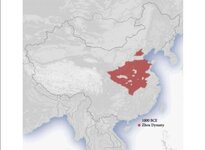
Expanding Han statehood and ethnics/identity happened intermittently throughout Chinese history and had three components: the (re-) emergence of a strong centralized State, Han migration to the borderlands and subsequent Sinification of subjugated peoples. This happened in waves. In the third and second century BC Qin and Han Dynasty started the conquest and Sinification of much of Central and Southern China. The area up until Shanghai was at that time populated by mostly tribal Austronesian-like peoples that shared lots of ethnic and linguistic commonalities with modern Viet and South East Asians. The Han called them Baiyue. The Han considered the Baiyue barbarians, their language, noticeably primitive civilization, half naked tattood bodies, societal structure and short and brown stature in contradiction to Han Chinese culture.
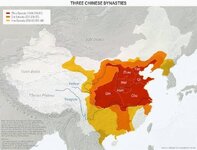
Next wave of Han expansion happened in the eight century under the Tang dynasty. The Tang considered access to the Ferghana Valley of high importance due to the high quality purebred Nisean horses from that region. Han conquered and settled much of what used and was/ would be the Silk Road. Tang Dynasty moved into expansion into Central Asia and was could have reached the Aral Sea were it not for the Persian-Arab Abbasids fighting the Tang to a standstill in 751 AD Talas.
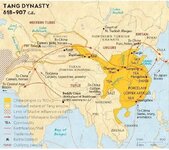
Pattern is the same everywhere. Yunnan was a mountainous borderland on limited importance, populated by Bai, Tai, Li and many other non- Han people. The non-Han had their tribal fiefdoms and at times Kingdoms in Yunnan but would occasionally submit to Chinese imperial rule when pressure grew. This would continue up until the Ming Dynasty Yunnan became incorporated in State structures. Waves of Han migrants and steady assimilation of non-Han minorities turned Yunnan into a 90 percent Han province.
Same in Tibet. Tibet was never Sinicized despite stints of Mongol/Chinese (with the Yuan taking on a distinct Chinese character as the dynasty matured) rule over the centuries. Tributary dynamics alternated with periods of sovereignty, and Han/Hui settlement in Tibetan areas of Qinghai, Sichuan and Tibet only started a few centuries ago.
Dongbei and Inner Mongolia were up until the 19th century Chuang Guandong by law off limits for Han Chinese. For millennia the area north of the Shanhai Pass was inhabited by nomads and barbarians, Tungusic and Turko-Mongol steppe people whose cultures differed like day to night with the Han civilizations. The nomadic steppe dwellers appear in different forms and with different names throughout Chinese history, but always parasiting on tye sedentary Southward neighbour and hostile towards its population. The Khitan, Jurchen, Tangut (?), Mongols, Xiongnu, Xianbei, Oirats, Manchus dwelled on the plains north of the Liaoxi Corridor, the agrarian Han lived south of those.
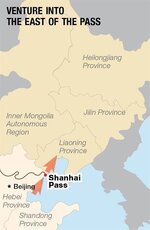
In the late 19th Century the Manchu Qing lifted the ban on Han settlement north of the Shanhai Pass and easternmost gate of the Great Wall. What followed was the Han rush, and literally within a generation the Manchus and Mongols had become a minority in their homelands. Anno 2025 the Manchu language is functionally dead and in danger of becoming extinct.
Han migration to South East Asia has been occurring for over a millennia, but picked up again in the late 1800s - and this wave to this day still calls itself Chinese. These migrants have been outperforming the SEA natives economically about everywhere and hence have an oversized influence in politics, media and academia. 9 out of SEA's 10 richest people are Chinese, Thailand's main political dynasty is ethnically Han, majority Han Singapore is the most successful state in the region etc.
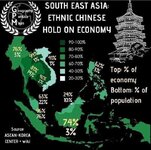
Han Chinese are not a race of passive fencesitters who prefer their low risk village lifestyle over grabbing the bull by its horns. The whole assertion that the CCP won't move on SEA and beyond because there is no historic precedent is logically bunk and laced with historic revisionism and narrative building.
On Chinese social media like Douyin, Wechat and Weibo a large number of posts appeared showing Palawan as Chinese territory, claiming that historically Palawan was already once considered Ming territory.
Even though this is not an official claim the Philippine authorities nevertheless considered it necessary to make an official statement.
Even though this is not an official claim the Philippine authorities nevertheless considered it necessary to make an official statement.
I hope this is true; it would be great news for the Chinese people.
This youtube analysis presented offers a strategic perspective based on U.S. and Chinese naval maneuvers in the Indo-Pacific region in the last few weeks including China's surprise drill on Taiwan yesterday, particularly around Taiwan and the South China Sea. Here are some key takeaways and additional context to consider:
1. U.S. Navy's Positioning: Avoiding the "Kill Zone"
This analysis identifies the South China Sea and Malacca as the strategic center of gravity in a potential U.S.-China conflict. Taiwan's fate may hinge less on battles in its strait and more on who dominates the broader maritime theater. However, the unpredictability of war—cyber attacks, economic collapse, or internal instability—could upend even the most logical strategies.
1. U.S. Navy's Positioning: Avoiding the "Kill Zone"
- The observation that the U.S. Navy avoided direct confrontation near Taiwan aligns with the concept of China's Anti-Access/Area Denial (A2/AD) capabilities. China has heavily invested in land-based missiles (e.g., DF-21D "carrier-killer" missiles), submarines, and airpower to deter U.S. intervention in a Taiwan scenario. Operating within this "kill zone" (roughly within the First Island Chain) would indeed be high-risk for U.S. carriers.
- By repositioning to Guam and later the South China Sea, the U.S. may be signaling a strategy of distant blockade or control of chokepoints (like the Straits of Malacca) rather than direct engagement near Taiwan.
- The SCS is not only a critical trade route (for China and global commerce) but also a region where the U.S. and allies (e.g., Philippines, Vietnam) could leverage geography to disrupt Chinese supply lines.
- China's artificial islands and militarization in the SCS (e.g., Mischief Reef, Subi Reef) are part of its effort to project power and secure sea lanes, but these could also become vulnerabilities in a conflict if isolated.
- The Straits of Malacca are indeed China's Achilles' heel—80-90% of its oil imports pass through this chokepoint. A U.S. blockade here would cripple China's economy and military logistics, akin to Japan's vulnerability in WWII.
- China's attempts to diversify via land routes (e.g., China-Pakistan Economic Corridor, pipelines from Russia/Myanmar) are far from sufficient to replace maritime trade. However, in a conflict, China might prioritize securing alternative routes or even preemptively striking U.S. bases in the region (e.g., Diego Garcia).
- While Taiwan is politically and symbolically paramount for China, militarily, its value is tied to broader control of the First Island Chain. Capturing Taiwan would extend China's A2/AD umbrella but wouldn't guarantee secure sea lanes if the SCS and Malacca remain contested.
- The U.S. might adopt a "hold Taiwan if possible, but strangle China if necessary" approach, leveraging Taiwan's proximity to the mainland for surveillance and strikes while focusing on cutting off China's maritime lifelines.
- In the 1996 Taiwan Strait Crisis, the U.S. could sail carriers near Taiwan with impunity. Today, China's missile and naval advancements make such moves suicidal. The U.S. now prioritizes distributed operations, long-range strikes (e.g., B-21 bombers, hypersonic missiles), and allied coordination (e.g., Japan, Australia) over direct carrier deployments.
- Assumptions about Chinese Capabilities: While China's A2/AD is formidable, U.S. countermeasures (e.g., stealth, electronic warfare, submarine warfare) could mitigate risks. The U.S. might still operate closer to Taiwan in a crisis, albeit with higher caution.
- Alliances Matter: The map doesn't show allied (e.g., Japanese, Australian) forces, which would play a critical role in any conflict. Japan's bases and anti-ship capabilities could alter the calculus.
- Escalation Risks: A U.S. blockade of Malacca could provoke extreme Chinese responses (e.g., nuclear signaling, strikes on U.S. territories), making such a strategy politically volatile.
- The maneuvers suggest a U.S. shift toward asymmetric strategies—avoiding head-on clashes while exploiting China's dependencies. This mirrors China's own "counter-intervention" playbook.
- For China, securing Taiwan without controlling the SCS could be a Pyrrhic victory. Hence, its naval expansions (e.g., aircraft carriers, Type 055 destroyers) aim to project power beyond the First Island Chain.
This analysis identifies the South China Sea and Malacca as the strategic center of gravity in a potential U.S.-China conflict. Taiwan's fate may hinge less on battles in its strait and more on who dominates the broader maritime theater. However, the unpredictability of war—cyber attacks, economic collapse, or internal instability—could upend even the most logical strategies.
